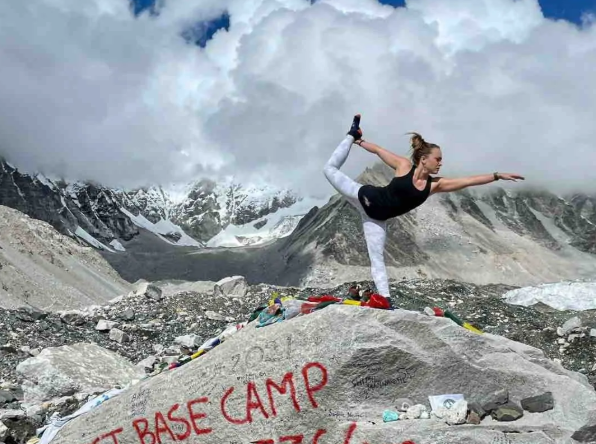The Everest Base Camp Trek is one of the world’s most iconic adventures, drawing thousands of hikers annually to the foothills of Mount Everest, the planet’s highest peak at 8,848 meters. Located in Nepal’s Khumbu region within Sagarmatha National Park, a UNESCO World Heritage Site, this trek takes you to Everest Base Camp at 5,364 meters, offering breathtaking views of snow-capped giants like Lhotse, Nuptse, and Ama Dablam. It’s not just about reaching the base of Everest; it’s a journey through Sherpa villages, ancient monasteries, rhododendron forests, and suspension bridges over roaring rivers. For many, it’s a test of physical and mental endurance, a cultural immersion, and a chance for self-discovery. In 2025, with updated infrastructure and sustainable tourism practices, the trek remains accessible yet challenging. Whether you’re a solo traveler or part of a group, expect to cover about 130 kilometers round trip over 12-14 days, starting from a thrilling flight to Lukla Airport. The best times are spring (March-May) for blooming flowers and clear skies, or autumn (September-November) for stable weather, avoiding monsoon rains or winter snows.
Preparing for the Trek
Success on the EBC Trek hinges on thorough preparation. Begin training 4-6 months in advance with a phased fitness routine: start with 30-45 minute walks or jogs 3-4 times weekly, progress to hill hikes with a 5-10 kg pack, and incorporate strength exercises like squats and lunges. In the final month, simulate trek days with 4-6 hour hikes on rough terrain. Mental preparation is key—practice in varied weather, set realistic expectations for basic teahouse accommodations, and build resilience to discomfort.
Packing smartly is crucial for the variable Himalayan conditions. Use a layering system: moisture-wicking base layers, fleece mid-layers, and waterproof outer shells. Essentials include sturdy trekking boots (broken in to avoid blisters), a zero-degree sleeping bag, trekking poles, gloves, hat, sunglasses, sunscreen, water purification tablets, a first-aid kit, and high-energy snacks like nuts or energy bars. Porters can carry up to 25-30 kg, so pack a duffel for them and a daypack for yourself. Don’t forget documents: passport copies, travel insurance covering high-altitude evacuation, and permits—Sagarmatha National Park Entry Permit and Khumbu Pasang Lhamu Rural Municipality Permit, obtainable in Kathmandu or Lukla.
Acclimatization is vital to prevent Acute Mountain Sickness (AMS), which can strike anyone above 3,000 meters with symptoms like headaches, nausea, and fatigue. Follow “climb high, sleep low,” stay hydrated (3-4 liters daily), eat carb-rich meals like dal bhat, and avoid alcohol. Itineraries include rest days in Namche Bazaar and Dingboche for adjustment. If symptoms persist, descend immediately and seek guide assistance.
Day-by-Day Itinerary
A standard 12-day EBC Trek starts in Kathmandu. Fly to Lukla (2,860m) on Day 1, then hike 7.8 km to Phakding (2,610m), an easy 5-mile descent along the Dudh Koshi River—perfect for shaking off jet lag. Day 2 covers 10.4 km to Namche Bazaar (3,440m), gaining 830m over 6.5 miles, crossing suspension bridges and climbing steeply—lunch in Jorsalle fuels the push.
Day 3 is acclimatization in Namche: hike to Khumjung (3,740m) for your first Everest glimpse, visiting a monastery and school. On Day 4, trek 9 km to Tengboche (3,870m), gaining 430m through rhododendron forests, passing stupas and spotting yaks. Day 5: 10.7 km to Dingboche (4,410m), a tiring 540m gain where breathing labors above 4,000m—layers are essential for cold snaps.
Day 6: Another acclimatization hike to Chhukhung, resting amid thinning air and basic teahouses with communal toilets. Day 7: 9.7 km to Lobuche (4,940m), gaining 530m along the Khumbu Glacier—spectacular but breathless views. The highlight is Day 8: 11.3 km to Gorak Shep (5,164m), then to EBC (5,364m). Expect rocky terrain, prayer flags, and the Khumbu Icefall—though Everest is hidden, the achievement thrills.
Day 9: Optional pre-dawn ascent to Kala Patthar (5,545m) for panoramic Everest sunrise, then descend to Pangboche, losing 1,230m over 17.6 km—energy surges on the way down. Days 10-11: Rapid returns to Namche (12 km) and Lukla (18.2 km), enjoying warmer air and flushing toilets. Day 12: Fly back to Kathmandu.
Variations include the Gokyo Lakes route for turquoise waters or the Three High Passes for advanced trekkers crossing Kongma La, Cho La, and Renjo La.
Challenges and Tips
The trek’s main hurdles are altitude sickness, unpredictable weather (freezing nights, sunny days), and physical strain—steep ascents and descents test legs and lungs. Solo trekkers face isolation but gain independence; hiring a guide (recommended for first-timers) eases navigation and safety. Tips: Walk slowly, respect locals with “Namaste,” try apple pie in Namche, pack light, use teahouse Wi-Fi sparingly, and be eco-conscious—carry out trash. For families or kids, it’s doable with preparation, but monitor for fatigue.
Costs in 2025
Expect $1,000-$1,300 for a solo independent trek, covering flights ($150-200 round trip), permits ($50-60), teahouse stays ($5-10/night), meals ($20-30/day), and extras like showers or charging. Guided tours add $500-1,000 for support. Budget extra for tips and souvenirs.
Conclusion
The Everest Base Camp Trek in 2025-2026 promises an unforgettable blend of adventure, culture, and natural splendor. Returning with stories of golden sunrises, Sherpa hospitality, and personal triumph, you’ll carry the Himalayas in your heart. Plan wisely, trek responsibly, and embrace the journey—it’s more than a hike; it’s transformative.

